
 Data Structure
Data Structure Networking
Networking RDBMS
RDBMS Operating System
Operating System Java
Java MS Excel
MS Excel iOS
iOS HTML
HTML CSS
CSS Android
Android Python
Python C Programming
C Programming C++
C++ C#
C# MongoDB
MongoDB MySQL
MySQL Javascript
Javascript PHP
PHP
- Selected Reading
- UPSC IAS Exams Notes
- Developer's Best Practices
- Questions and Answers
- Effective Resume Writing
- HR Interview Questions
- Computer Glossary
- Who is Who
How to enable JavaScript in Windows?
A cross-platform web browser made and developed by Microsoft is called Edge. After being available on various platforms, including Android and iOS in 2017, macOS and earlier Windows versions (Windows 7 and later) in 2019, and Linux in 2020, it was originally packaged with Windows 10 and Xbox One in 2015.
Internet Explorer (IE) was replaced as the default web browser in Windows 11 by the Chromium-based Edge (for compatibility with Google Chrome).
The original purpose of JavaScript was to "bring online pages alive". Scripts are what this language refers to as programs. They can be included directly in the HTML of a web page and executed immediately when the page loads.
Plain text is used to deliver and run scripts. They don't require any other setup or compilation to function. JavaScript, as it exists today, is a "safe" programming language. It does not offer low-level access to memory or the CPU since it was designed with browsers that do not need it.
This tutorial will teach you how to enable JavaScript on Windows. To enable JavaScript in Windows, you should enable it in Microsoft Edge. The Microsoft Edge browser used in this tutorial is Version 103.0.1264.77.
Enabling JavaScript on Windows
STEP 1 ? On your computer, launch the Microsoft Edge browser.
STEP 2 ? At the top right of your screen, select the Menu symbol (three dots).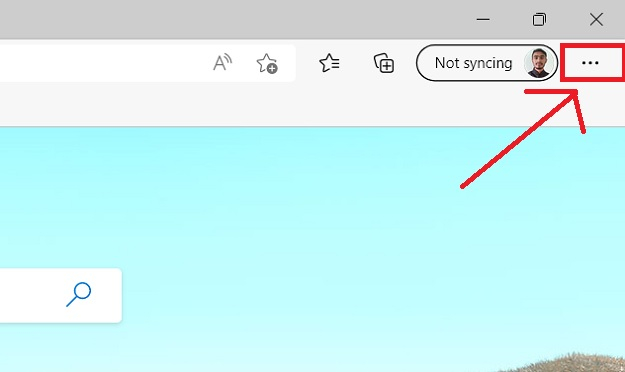
STEP 3 ? On the drop-down menu, choose "Settings".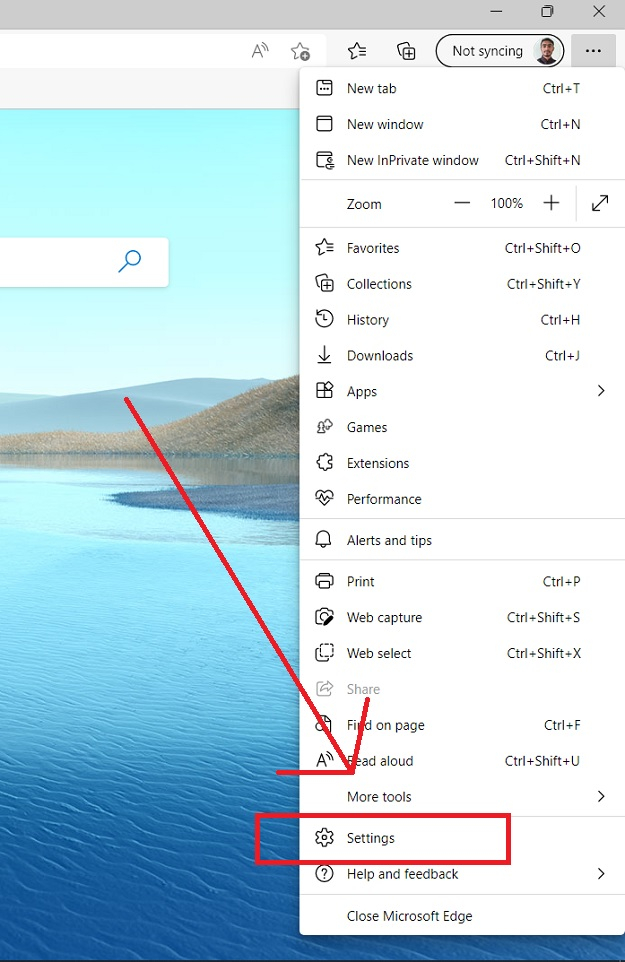
STEP 4 ? Next, select "Cookies and Site Preferences" from the menu on the left sidebar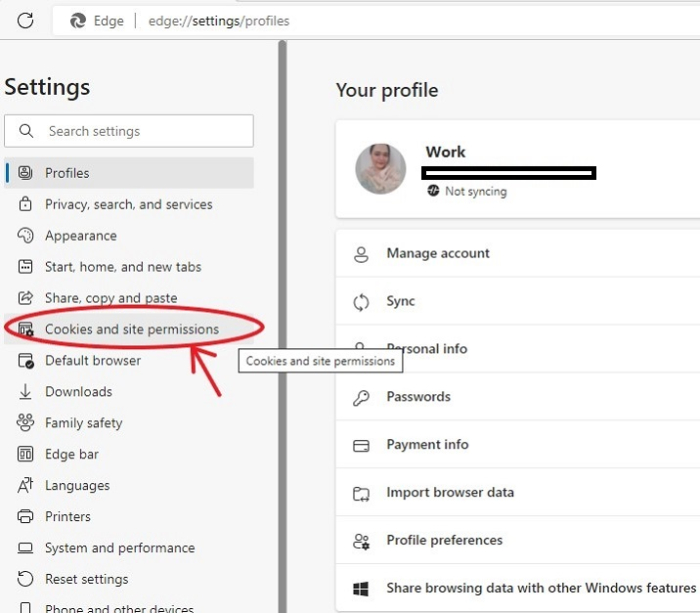
STEP 5 ? Scroll down to "JavaScript" under "Cookies and Preferences", then click it.
STEP 6? You can see a blue toggle. This means that JavaScript is enabled for this browser across all sites.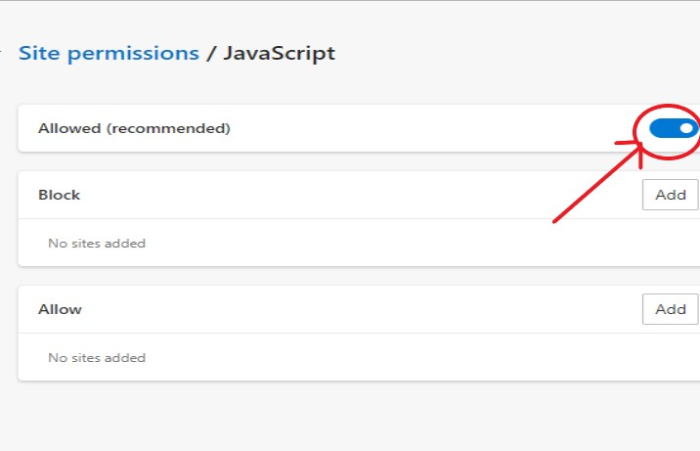
There may be times when you wish to enable advertisements on particular websites or view a page without JavaScript enabled. You may totally enable JavaScript on Microsoft Edge or enable it per site.
How to Enable JavaScript Only on Specific Pages?
Follow the steps below to enable JavaScript only on specific pages
Choose the "Allow" area to add the website or page's URL that you wish to allow JavaScript to run on.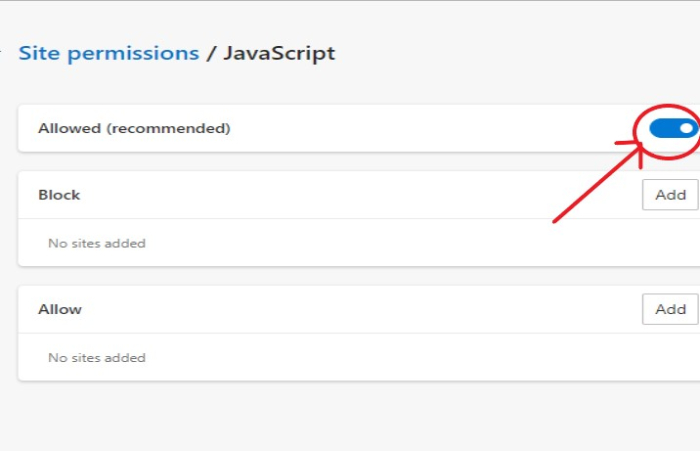
When you click the Add button, a screen asking for the URL of a website that is permitted to use JavaScript will appear. To add this site, input the URL and click the Add button to this section.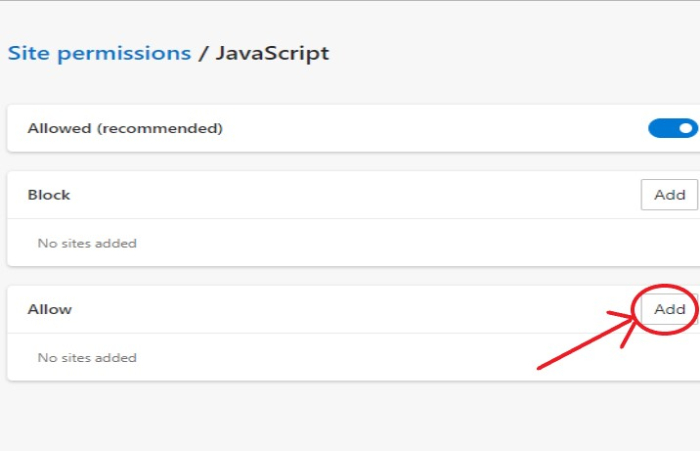
Why would the user need to enable JavaScript?
Numerous websites on the internet use JavaScript, a scripting language that the web browser executes to enable particular web page capabilities. A web page's functionality or content may be restricted or inaccessible if JavaScript has been deactivated in your browser. The procedure for turning on JavaScript on your Windows browser is described in this tutorial.
Another problem is that if websites' photographs, videos, maps, and other content are lost, there may be a decrease in media exposure and access. JavaScript refreshes webpages and searches often to make it simpler to scroll through the content. You can view images that need you to click several buttons if you leave them on.
Today, JavaScript is installed and activated by default in almost all web browsers. The JavaScript applications that run in your browser improve or make possible several functionalities of a website. In the interest of user security, JavaScript's capabilities in the browser are constrained. The objective is to stop a malicious webpage from obtaining personal data or damaging the user's data.
This is the fastest and easiest approach to enabling JavaScript on Windows using the Microsoft Edge browser. The user will need to download the latest version of Microsoft Edge, for any user might need to enable JavaScript. This is a default value in almost all web browsers. This tutorial gives a step-by-step approach to how a user can enable JavaScript on their browser.

